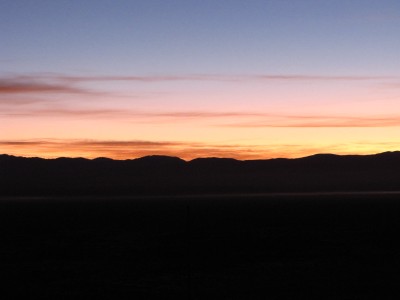
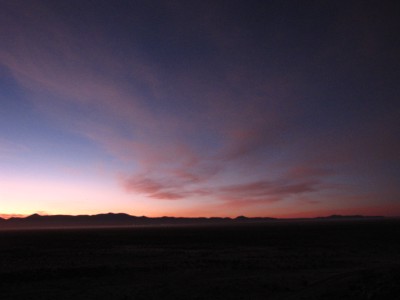
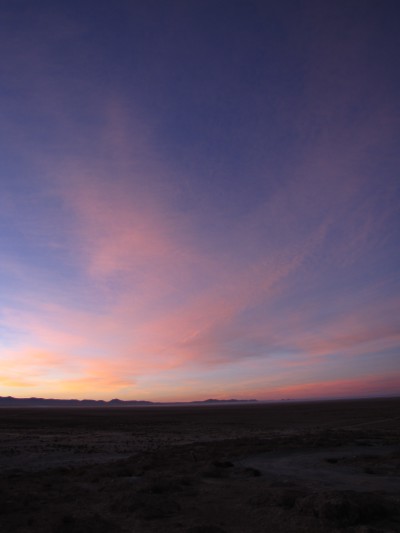
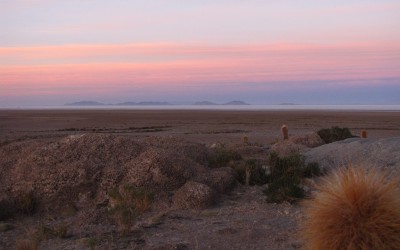

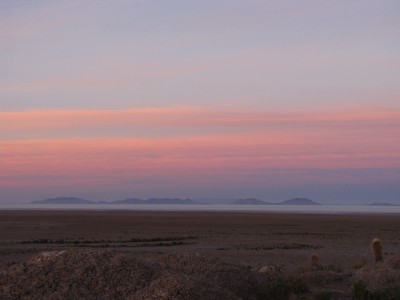
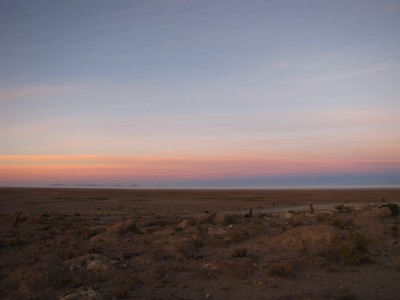
Friday, June 11, 2010
Justin got up at 5:45 to film the sunrise while Crystal slept. The proprietor had said the night before that sunrise was at 6am, but lost somewhere in the translation was that the sun didn't actually rise until 7, and it only started to get light at 6. When Justin first went outside, it was still pitch black, with an incredible amount of stars (and the whole milky way) visible. By the time the actual sunrise occurred, Justin's hands and toes were frigid, so hopefully the video he got was worth it. Interestingly, there wasn't a noise to be heard. There were no bugs, no birds, nothing.
 |
 |
 |
|
 |
 |
 |
 |
When the sun actually rose, looking back towards the Salar (away from the sun) was much more interesting, because the white surface quickly turned from dark to light, like opening a drape in a dark room. Either because of a tiny bit of water, because the salt was so bright, or both, there were some crazy mirages. The mountains all looked like they had anvil-shaped tops - it was the bottom of the mountain reflecting up. Thankfully, both our still cameras and the video cameras captured it as well.
 |
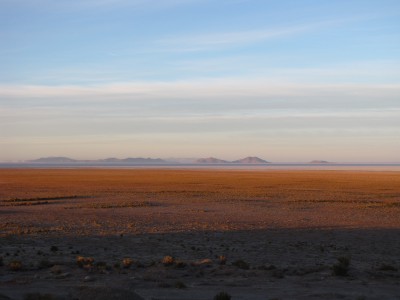 |
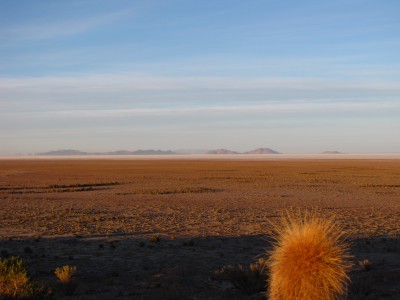 |
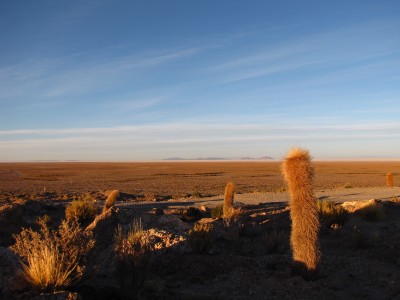 |
We got packed, then ate breakfast. The people from the night before were already gone, so we were the only ones in the hotel for breakfast. At breakfast, we noted a big pack or herd or flock of something, so Justin went outside to look. It was too far away to tell with the naked eye, but from looking at the pictures, it looks like it was a huge flock (100+) of flamingos. We have no idea what they were doing or where they were headed, but the size of the group was very impressive. While outside checking out the flamingos, Justin also saw some house cats, which he was not expecting.
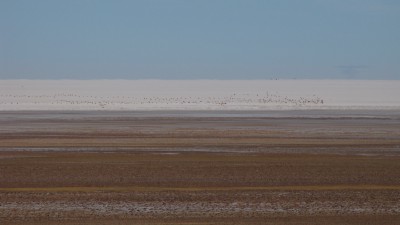 |
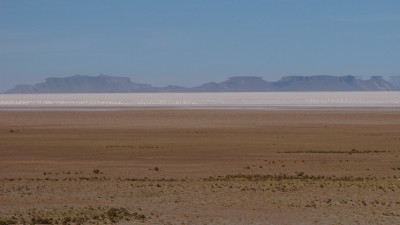 |
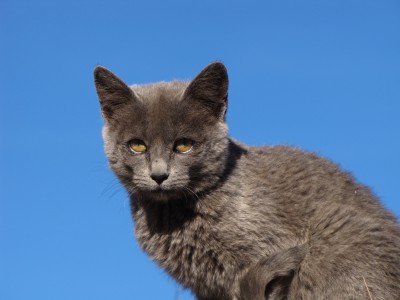 |
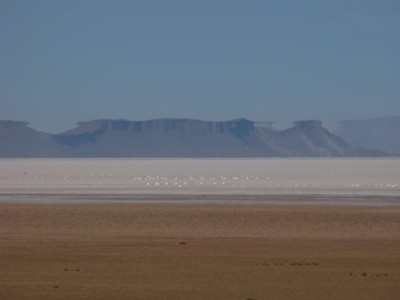 |
After breakfast, we walked around a bit, then waited for our tour guide from Fremen Tours (arranged through Ruta Verde Tours) to show up. We were told that they would be there around 10, so we waited, but there was no one there at 10. We could see for miles and miles, so we could see when a vehicle was coming towards (or not coming towards) our hotel, and there wasn't anyone in sight. To avoid fidgeting, we played ping pong inside the game room of the hotel. We had a lot of fun, and it did help quite a bit with our nervousness. We gave our guide until 10:30 before we would call for assistance, and she showed up just before 10:30.
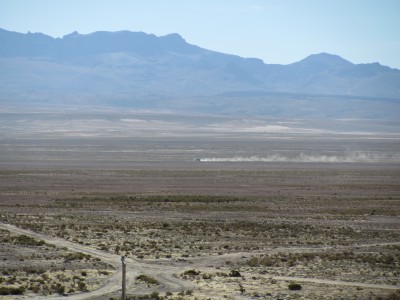 |
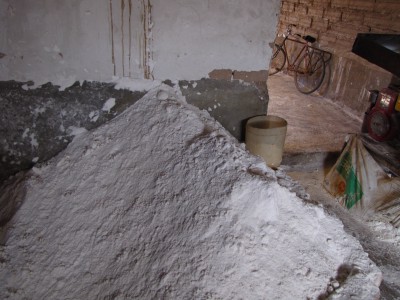 |
We had both a guide, Silveria (her email address, if you want to schedule a tour), and also a driver, Hilario. They thought we were staying in Uyuni, not Colchani. It didn't end up mattering much, because our first stop was in Colchani, just a couple of minutes from where we were. In Colchani, we went to a salt factory to see how the salt is made and packaged. Inside the "factory" there were some huge piles of salt - Tony Montana would have been proud.
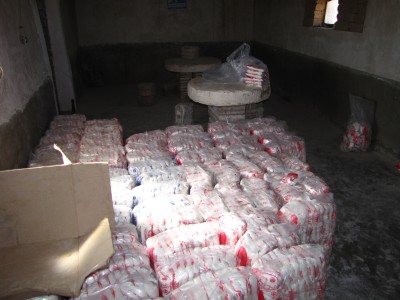 |
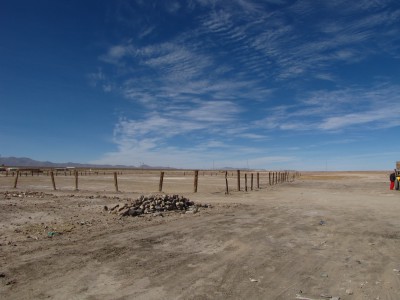 |
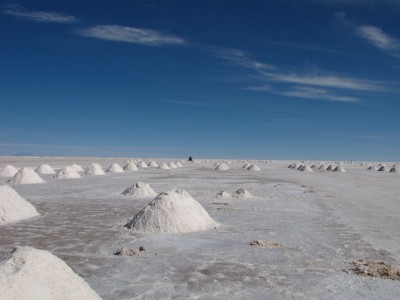 |
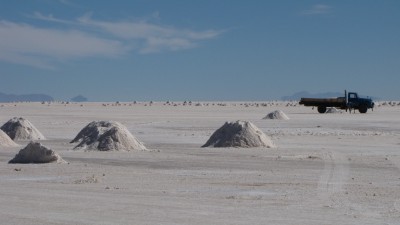 |
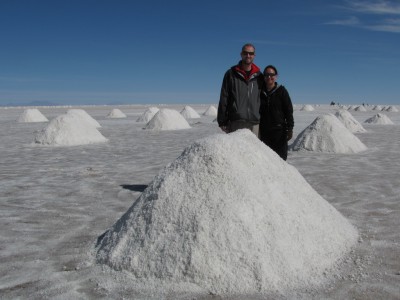 |
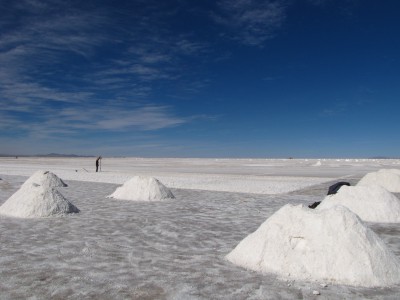 |
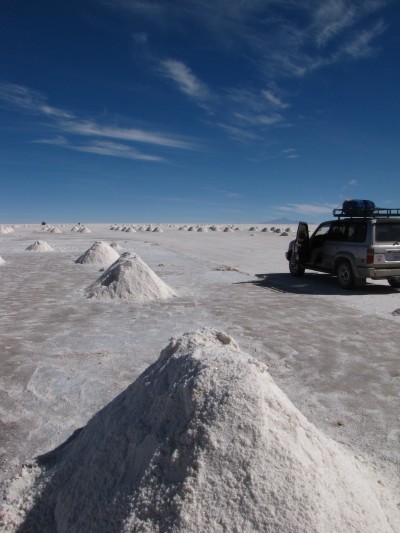 |
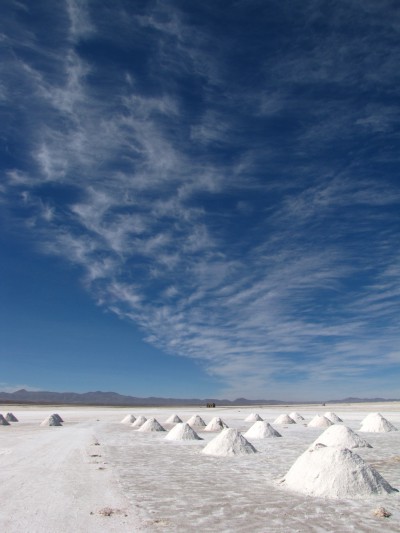 |
There weren't a whole lot of workers, and that may have been because it was the first day of the World Cup - Mexico was playing South Africa, and there were a bunch of people huddled around the radio. After leaving Colchani, which is right on the edge of the Salar, we went into the Salar to see how they pile the salt prior to transportation. They scrape the top layer of the salt, and then pile all of the loose salt into little pyramids so that the wind would be less likely to blow the salt away.
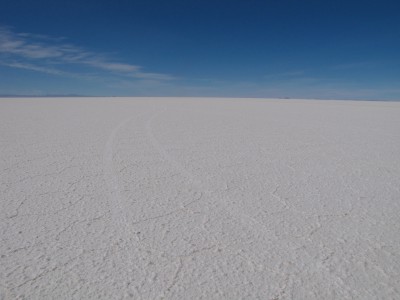 |
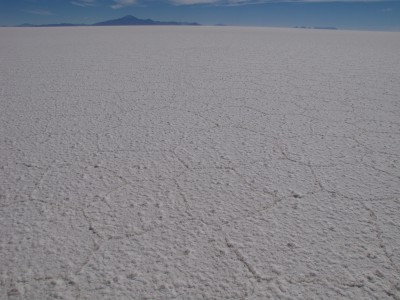 |
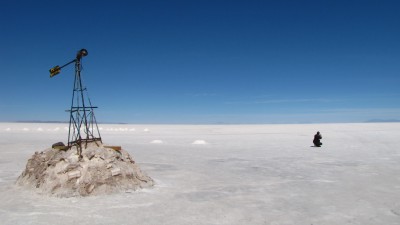 |
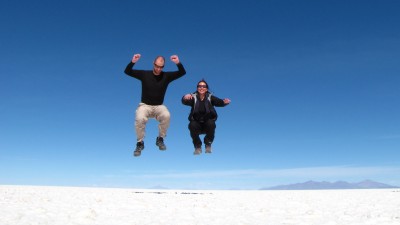 |
 |
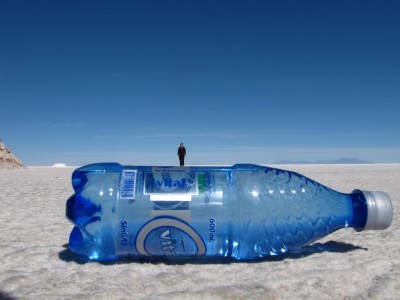 |
As we expected, the Salar was otherworldly. We haven't been to the Bonneville salt flats in Utah, and they may be remotely similar, but the Salar de Uyuni was totally unlike anything we'd ever seen on any of our other travels. The area was uniformly white, and exceedingly flat, eliminating all depth perception. We stopped for a bit at an old hotel (now a museum) near the "entrance" to the Salar. There was a small area with a bunch of flags - US tourists, someone please bring a US flag here.
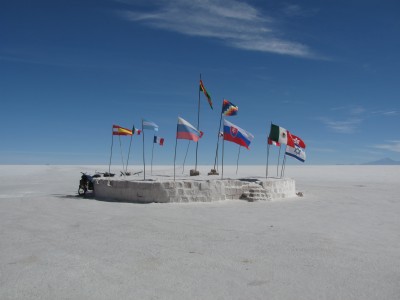 |
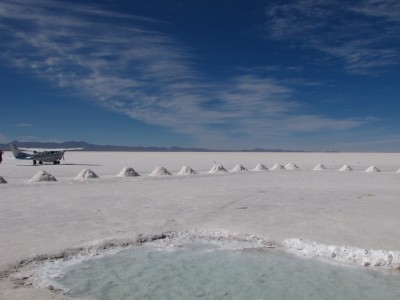 |
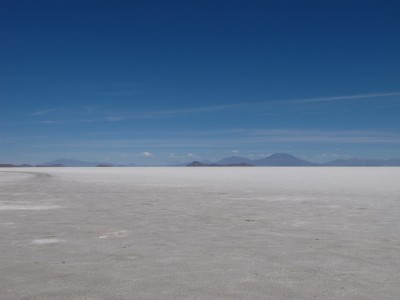 |
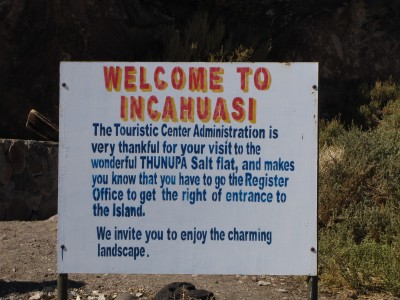 |
In addition to the small area with flags, there was also an airplane there - apparently some rich tourists had chartered a small plane and just flown straight into the Salar, landing on the salt itself. According to Silveria, this was an exceedingly rare occurence. It won't be rare in a couple of years, however, as there should soon be a new and improved airport in Uyuni (the city, not the Salar). When this happens, getting to the Salar should be much easier, although this may make the experience not so exotic, since there won't be as much of a "journey" involved. We drove out to Incahuasi, an "island" in the middle of the Salar, which had a ton of cactuses and also coral formations.
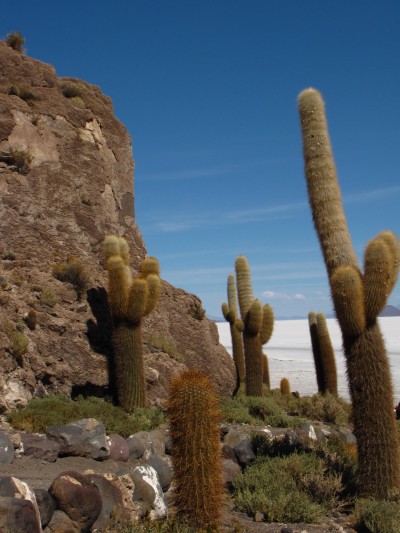 |
 |
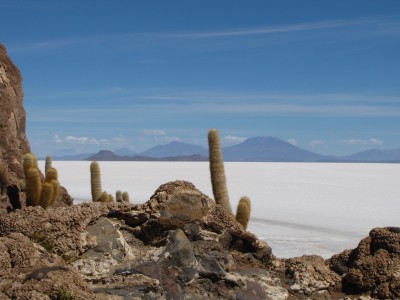 |
 |
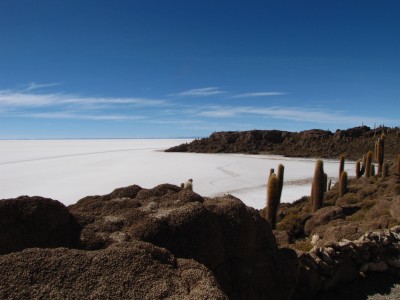 |
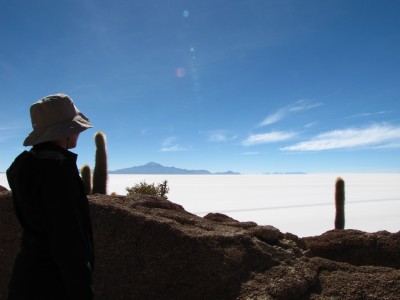 |
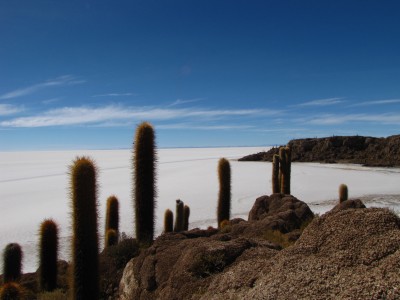 |
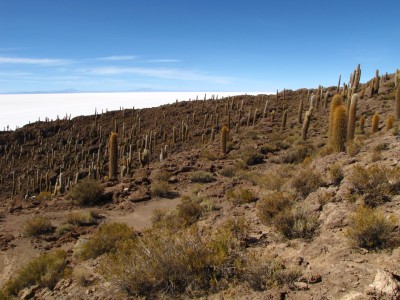 |
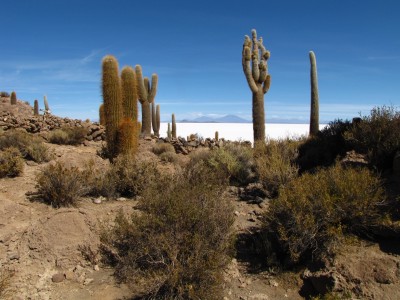 |
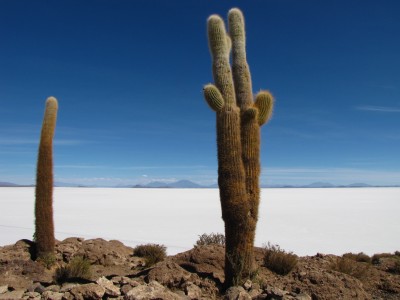 |
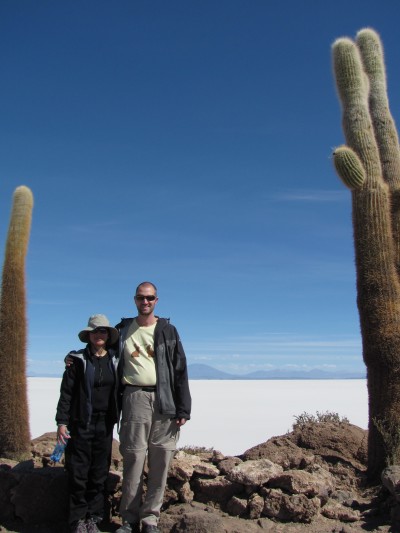 |
|
 |
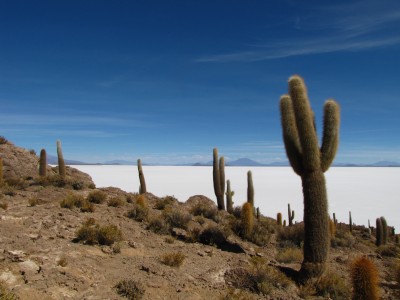 |
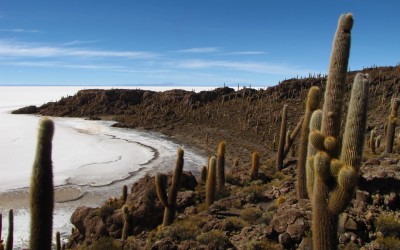 |
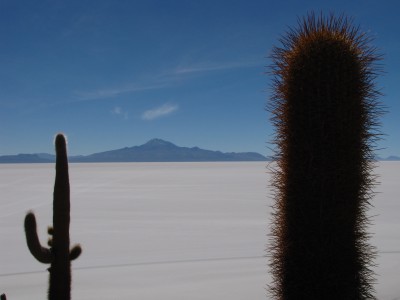 |
Since the Salar used to be part of the sea (way way back), there was coral, and when the area rose up and the ocean receded, the dead coral formations remained. Incahuasi is on nearly all of the Uyuni tours because it provides some scale and context for the size of the Salar, and also gives a good foreground (or background) for pictures involving the Salar. There is a path on the island that leads up to the top, where there is a ceremonial area for the native Aymara people.
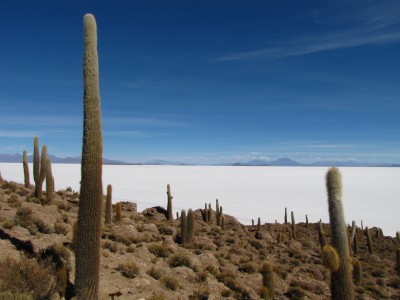 |
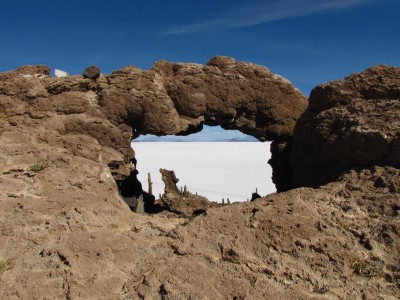 |
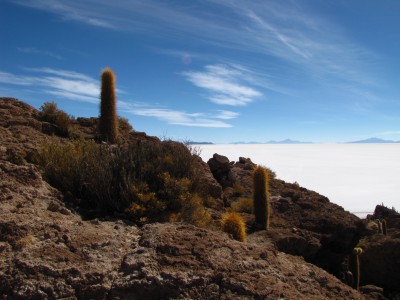 |
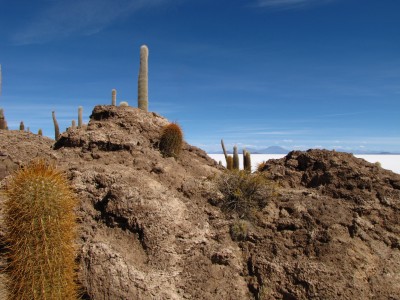 |
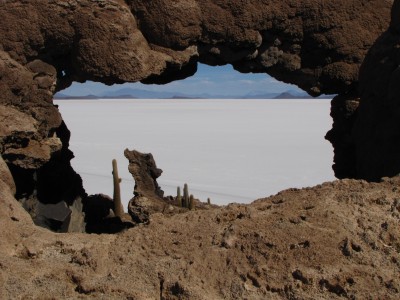 |
 |
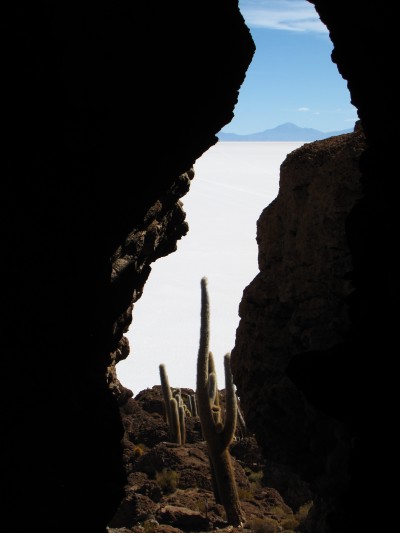 |
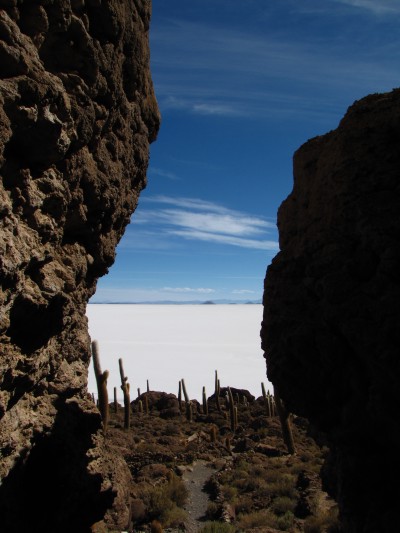 |
There is a slightly different path that leads back down, and goes through a couple of craters and caves. On the way down, we saw a Vizcacha, which is interesting considering that Incahuasi is literally in the middle of nowhere. There are no predators, but also little if any water, and not much food. Basically, a very small number of Vizcachas live there, eat fruit from the cacti, reproduce, grow old and die, with not much if anything else going on.
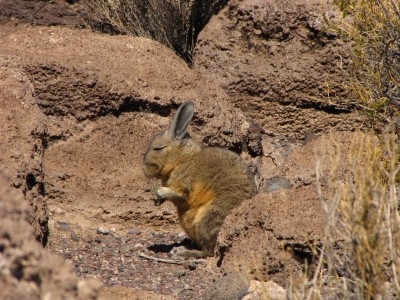 |
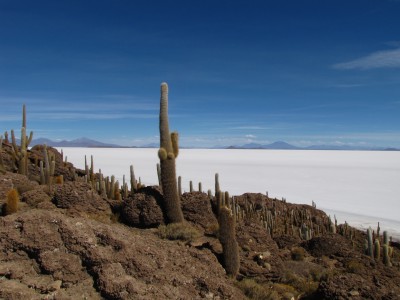 |
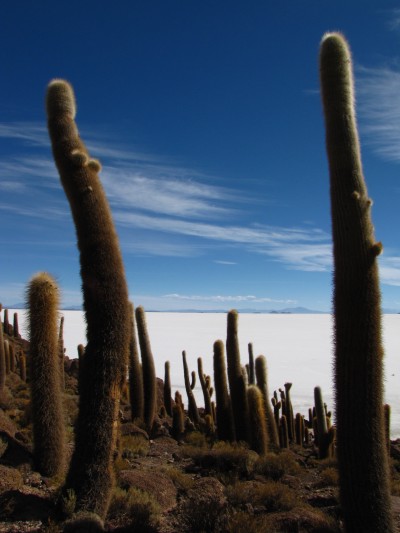 |
|
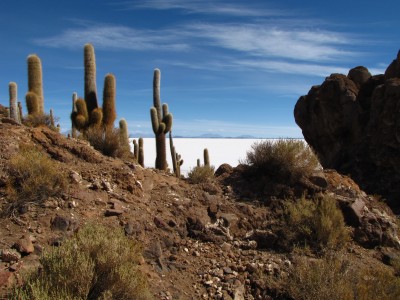 |
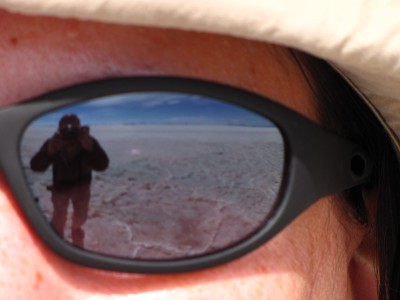 |
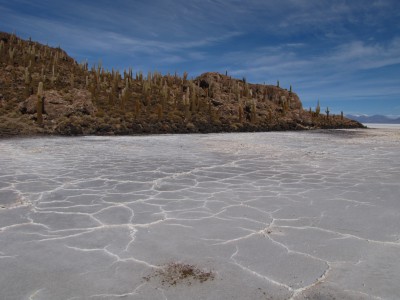 |
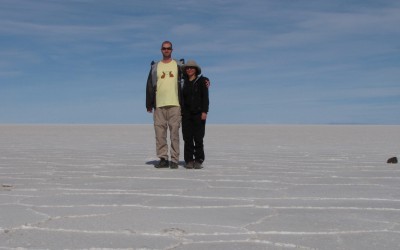 |
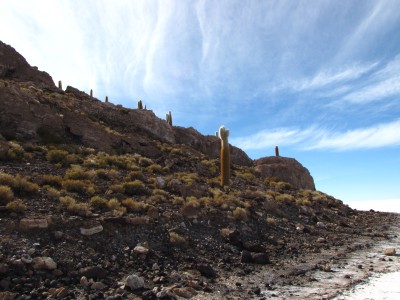 |
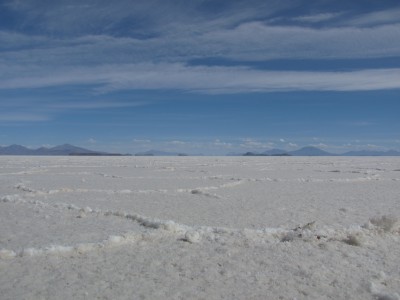 |
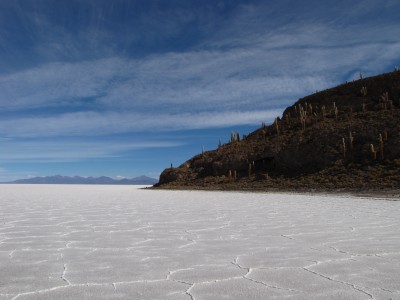 |
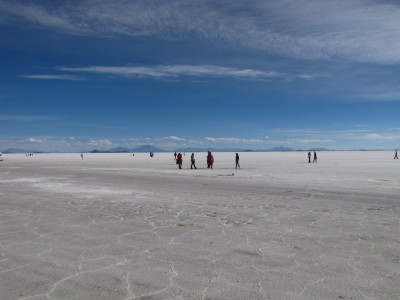 |
Back at the bottom of the island, we ate lunch, then went out for a walk around the island. Silveria told us that it would take 45 minutes to walk the perimeter, but we kept stopping to take pictures, and realized we needed to rush for the last little bit. We got back in the car around 2pm, then went out to an area near nothing else and took a bunch of what Silveria called "silly pictures."
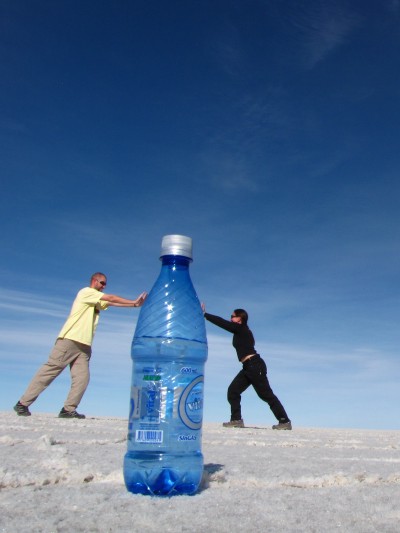 |
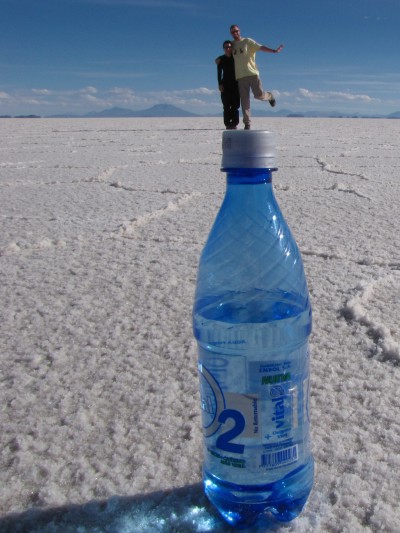 |
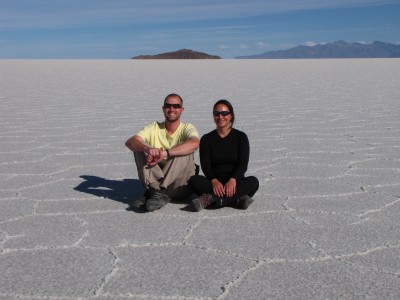 |
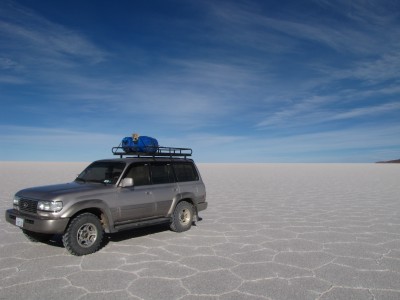 |
Since there was little if any depth perception, close up objects would appear large and far away objects would appear small, but it was impossible to tell how far away the close and far objects were. Because of this, we were able to get pictures of Justin holding Crystal in his hand ("Justin's little buddha"), the two of us pushing on a giant water bottle, us sitting in Hilario's hat, us standing on a 3" boat, and many others.
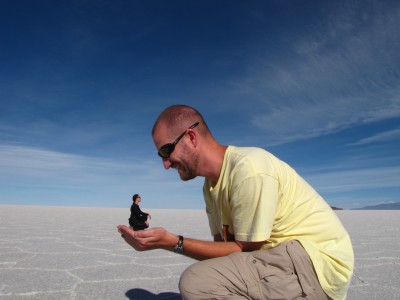 |
 |
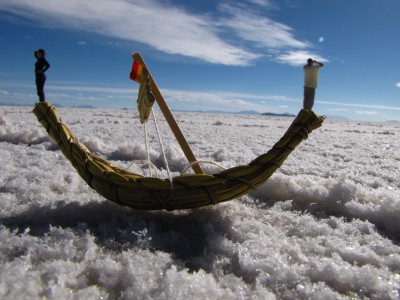 |
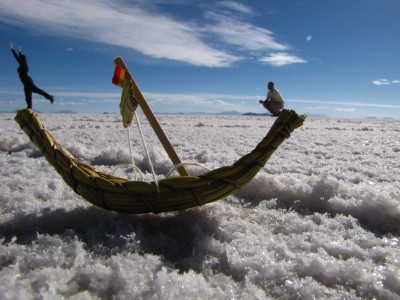 |
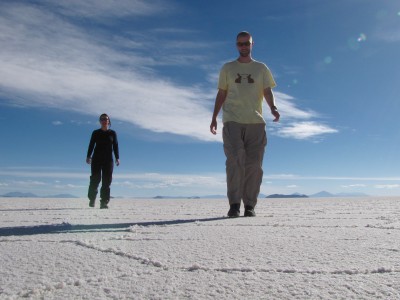 |
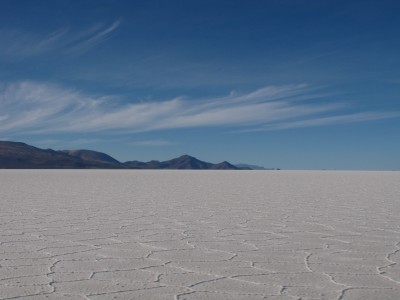 |
From there, we drove towards Tahua and the Thunupa (Tunupa) volcano. We kept thinking we were almost there, but it was like going towards a rainbow, we never seemed to get any closer.
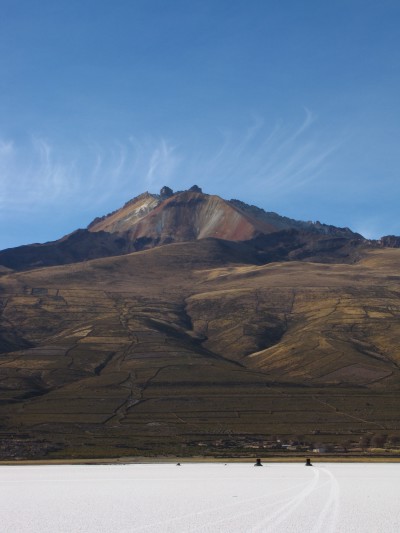 |
|
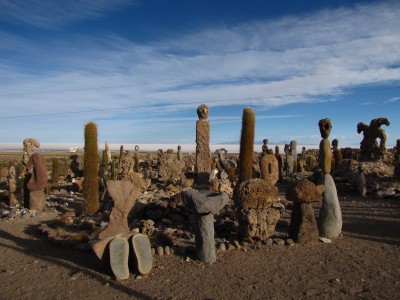 |
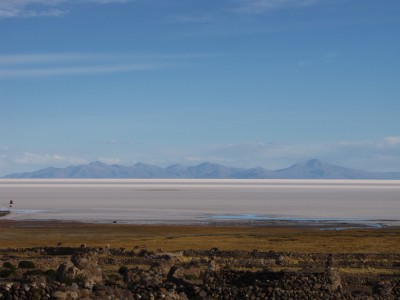 |
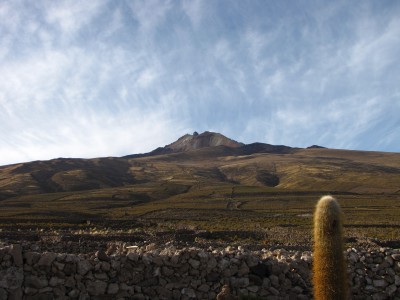 |
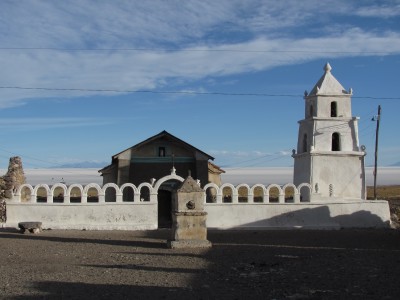 |
Eventually we did get to the small village of Chaltani on the northwest edge of the Salar, and there we saw a small museum with relatively current but also pre-Inca artifacts. Unfortunately, we had no idea what was what, and our Spanish wasn't good enough to ask. The museum was owned just by a couple who lived in Chaltani, and they made afternoon tea for us. The husband had set up a rock garden full of rock formations that looked like various animals.
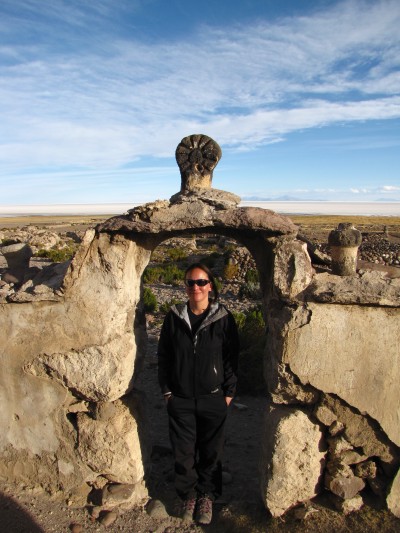 |
|
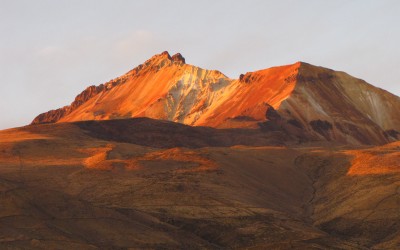 |
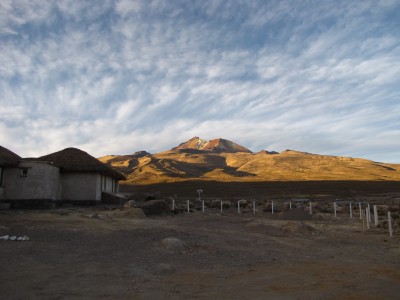 |
 |
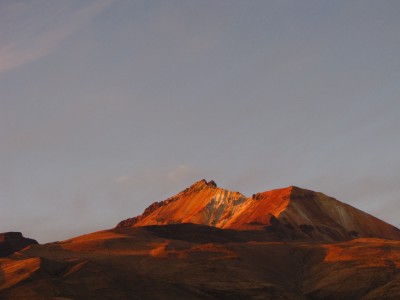 |
We got to our hotel, the Hotel del Sal (which was owned by the people of the Tahua village) shortly before sunset. Like the hotel the night before, this one was also made of salt. We had an incredible view, looking straight out at the volcano. We showered immediately, before the water from the solar heater cooled down, and also before the sunset was gone. We caught the tail end of the sunset, and the colors were amazing. There were many more clouds than the night before, and they turning all sorts of orange, pink, and purple.
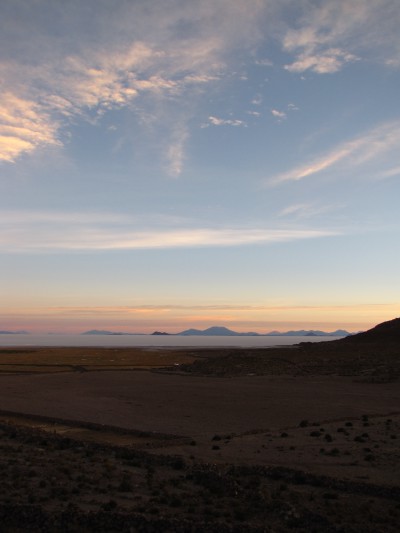 |
|
 |
 |
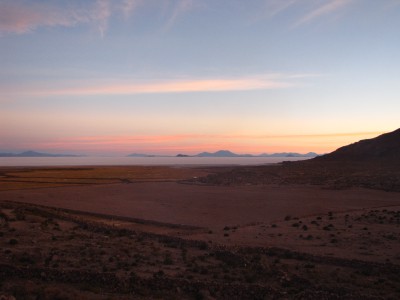 |
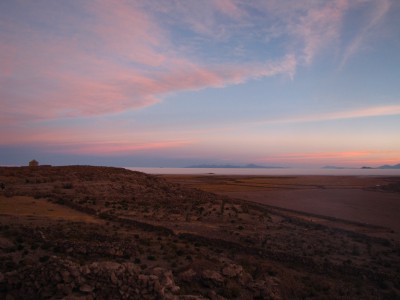 |
 |
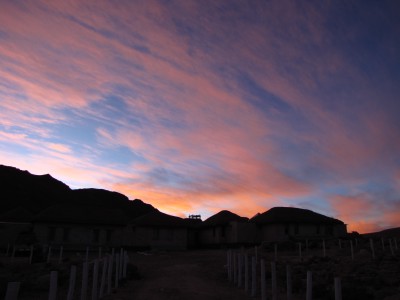 |
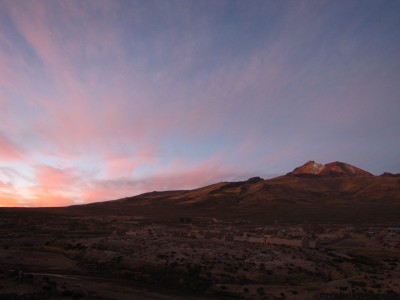 |
 |
Like breakast in the morning at Hotel Luna Salada, we were literally the only guests at the hotel, so we ate dinner at 7 so that the employees could wrap up sooner. After dinner, we went back to the room to check out the 350+ photos we had taken during the day.